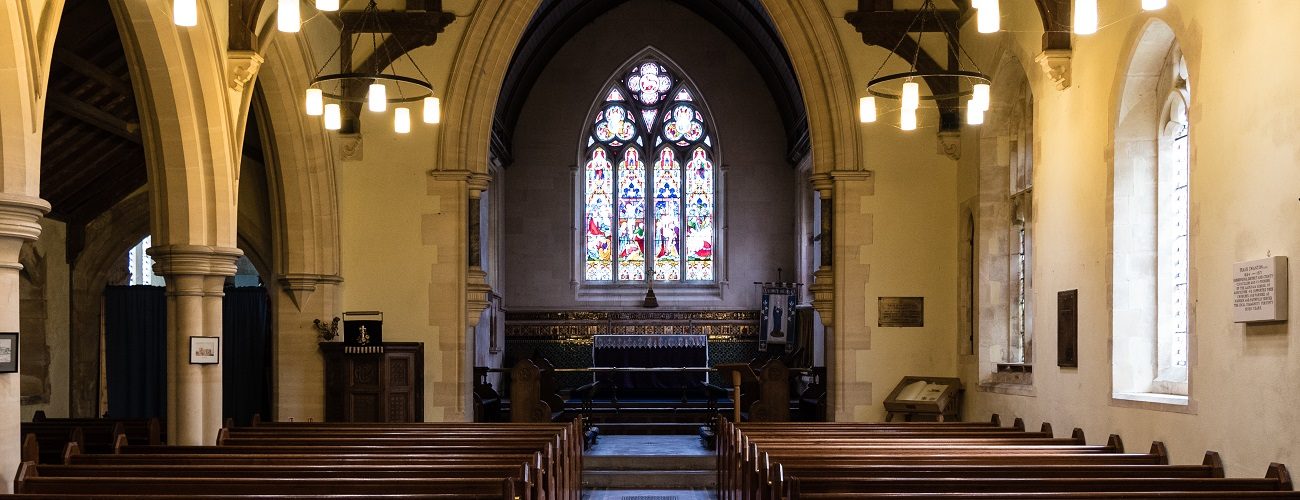
Welcome to St Nicholas
Fyfield
St Nicholas Fyfield is a much loved and well cared for Chapel of Ease in the parish of West Overton, East Kennet and Fyfield. Like the other churches of the Upper Kennet Benefice Fyfield church is rich in pilgrim history. It also contains a rare 9th century carving of the Holy Trinity.
Who's Who
Mrs Alison Ingham
Secretary
(07734 761912)
Mr MARK BEVERLEY
Treasurer
Regular Services
Regular services take place each month at St Nicholas .
The details for these can be found by searching for ‘St Nicholas’ on our calendar..
History
St Nicholas Fyfield is listed in the Domesday Book 1086 A.D. The church as it currently stands certainly dates from the 14th Century and was believed to have Saxon foundations. We now understand that the earlier Anglo Saxon church contained some remarkable Celtic carved images of the Holy Trinity. St Nicholas church was originally a chapelry of West Overton and became its own parish in 1704.
However, recent historical investigations into the churches of the Upper Kennet Benefice have revealed a far richer heritage than originally understood. The churches of the Benefice, including Fyfield, were used by pilgrims on their way to Bristol, where they took the sherry boats to Spain, and continued their walk to Compostela di Santiago, then onwards to Rome and Jerusalem.
Sometime circa the year 1632, Fyfield was led by the first of several puritanical priests who stripped out the trappings of what they perceived as ‘popish heresy’ and in doing so denuded the church of a great deal of its earlier internal heritage. The ceiling, frieze and carvings have been identified as being considerably older than the date of 1634 carved above the entrance to the Chancel, and architectural remnants indicate that once a large cross hung over the entrance to the Chancel. A carved frieze running around the entire nave dates from the 17th century.
Fortunately, these fanatically puritan priests did not remove one of the most rare and special depictions of the Holy Trinity in a roof-carving. High above the Nave are wooden carved cross beam sections, each of which is of one piece. The entire carving, of Celtic origin, is a symbol of the Trinity and was incorporated into the roof circa 9th Century. The Trinity is depicted as making the universe spin with their passion and love.
The date 1634 carved in the cross beam over the Chancel marks a line between the puritan preacher in a puritan place ending the struggle against High Church priestly rule. This battle takes place during the time of Archbishop of Canterbury, William Laud. His High Church policy, support for Charles I, censorship of the press, and persecution of the Puritans aroused bitter opposition.
Originally, the entrance to the church was approximately 8-10 feet above current floor level and those entering the church did so through the elevated West Door, descending into the church. It is no wonder explorers failed to find the classic pilgrim graffiti marks on the lower walls of the Vestry area for they were some 15-20 feet above our heads, carved with dagger points as they passed in and out.
Exterior
Facing the church one sees the porch – but viewed side on one sees that originally there would have been a Saint’s niche over the doorway – a stone covering for the Patron Saint, Nicholas.
Wander around the church and you will find many fine examples of graffiti:
A Sun dial, providing a hole for a stick, which helped indicate the time
A pilgrim Cross of St James -a basic joining across three dots- is very unusual form of making the sign of the cross.
A very intricate dotted pattern was found to have been made by a medieval dagger point twisted hard against the stone
A ‘T’ or Tao cross reminding us of the symbol of Moses on Mount Nebo. A Franciscan order of monks connected to Wilton Priory and heavily influential in terms of pilgrimage may well have been along this route and may have contributed to the vast number and wealth of T crosses on this particular church.
At the rear of church we see evidence of servants loitering waiting for their rich masters. In idleness and boredom, they played ‘fives’ against wall. Tudor graffiti W –and Stuart graffiti- also present along with in excess of a dozen more pilgrim crosses.
Classic pilgrim’s crosses are normally found on south side of churches, as traditionally the North side of the church was regarded as being the Devils’ side. At Fyfield however, the Cross carvings are found on the North side- where pilgrims gathered. Why? Because a North aisle would have been there originally and when the whole site was rebuilt the North Aisle was removed, and the remnants used elsewhere in the rebuild.
Local Organisations
The Church works closely with the school which prides itself on the care and guidance it provides for its pupils with Christian values at the core of everything it does.
if you would like to find out more about the school and its activities, please visit their website.
Little Angels is a church run toddler group which meets once a fortnight at Kennet Valley School. Bumps, babes and pre-schoolers are all welcome to come and join in with singing, craft and story time. There is no fee, just plenty of free tea and cake for grown ups and snack for little ones. This is a great opportunity to meet with other local parents/ carers and for children to come along and play, sing and learn.
Serving the villages of Fyfield, West Overton and Lockeridge, you can find details of the next parish council meeting on our website to find out how your council serves this community.
